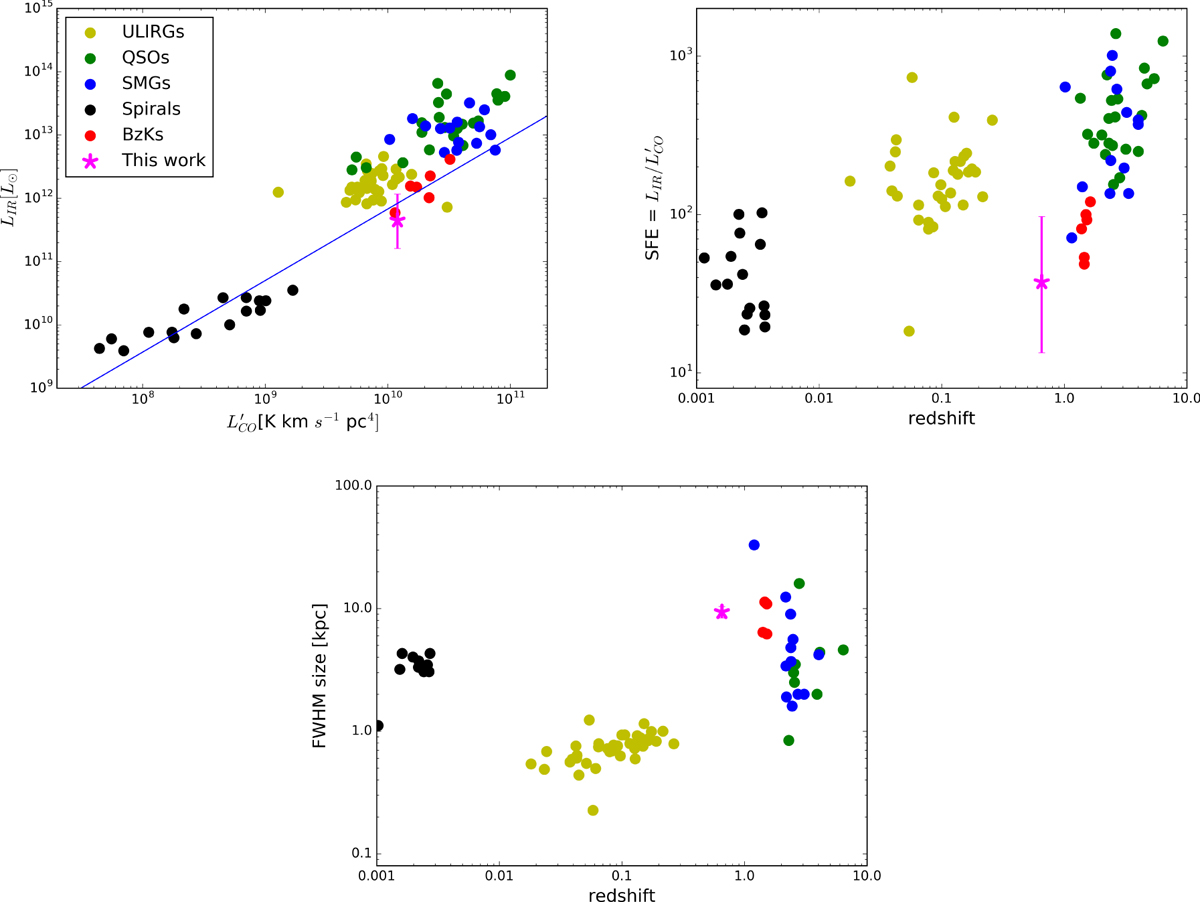Fig. 8

Comparison of CO and IR properties of RX J1131-1231 to various local and distant samples as in Daddi et al. (2010). Upper-left: CO vs IR luminosity. Upper-right: star-formation efficiency (SFE) as a function of redshift. Lower: FWHM CO region size as a function of redshift. Individual symbols indicate: SMGs (blue circle, Greve et al. 2005; Daddi et al. 2009; Frayer et al. 2008), QSOs (green circles, Riechers et al. 2006; Solomon & Vanden Bout 2005), local ULIRGs (yellow circles, Solomon et al. 1997), local spirals (black circles, Leroy et al. 2008; Wilson et al. 2009), BzK galaxies (red circles, Daddi et al. 2010). For local spirals, we associate a Hubble-flow redshift (right panel) based on the actual distance. The solid line in the upper left panel shows the best-fitting LCO vs. LIR relation to the combined sample of local spirals and distant BzK galaxies. The star-formation efficiency (SFEs) is defined as the ratio LIR/![]() . For the COsizes, only resolved sources from individual samples have been used. Given the limited number of SMGs in Daddi et al. (2010) with resolved CO emission, in the bottom panel, we include the SMG sizes reported by Tacconi et al. (2008).
. For the COsizes, only resolved sources from individual samples have been used. Given the limited number of SMGs in Daddi et al. (2010) with resolved CO emission, in the bottom panel, we include the SMG sizes reported by Tacconi et al. (2008).
Current usage metrics show cumulative count of Article Views (full-text article views including HTML views, PDF and ePub downloads, according to the available data) and Abstracts Views on Vision4Press platform.
Data correspond to usage on the plateform after 2015. The current usage metrics is available 48-96 hours after online publication and is updated daily on week days.
Initial download of the metrics may take a while.


